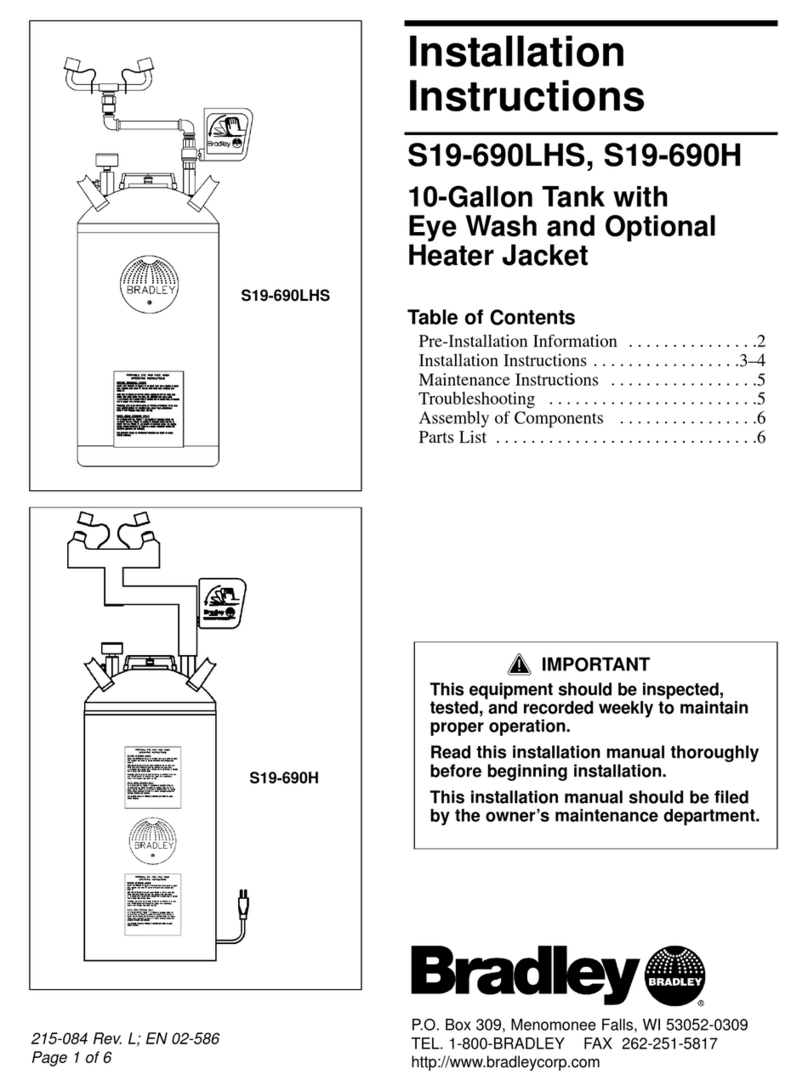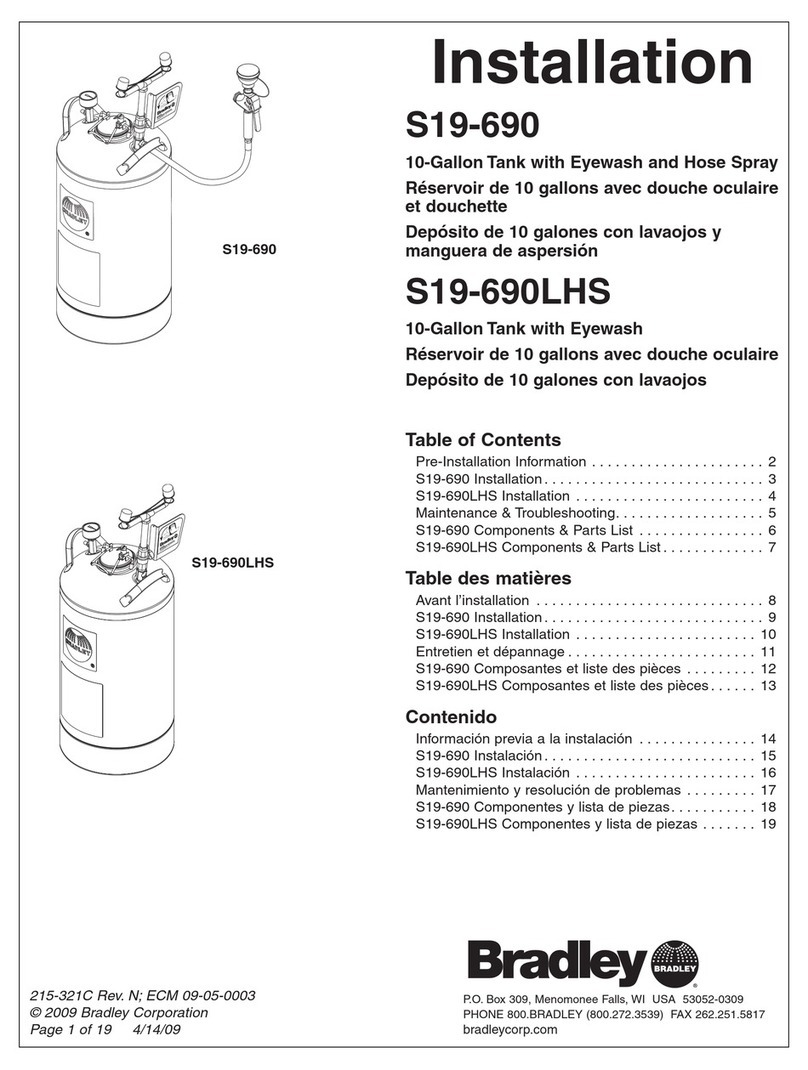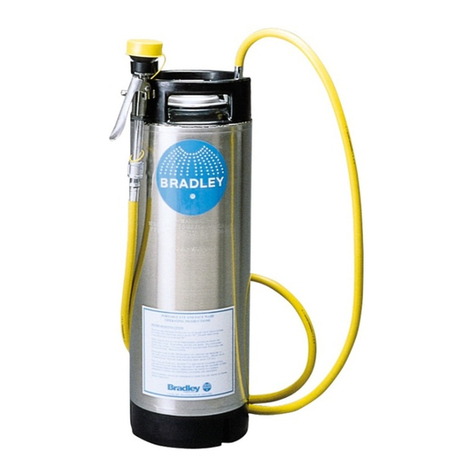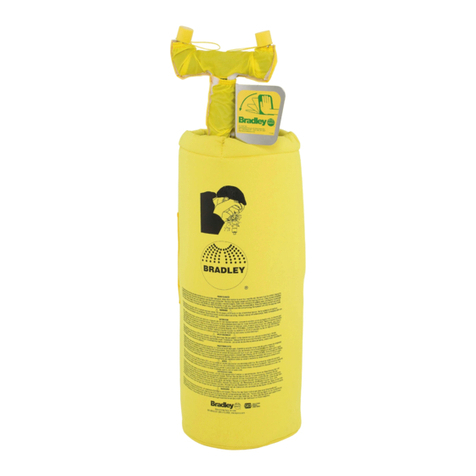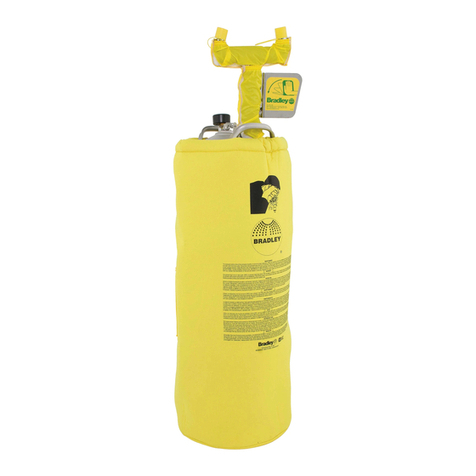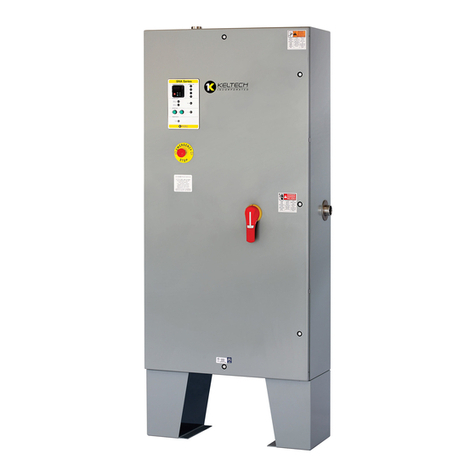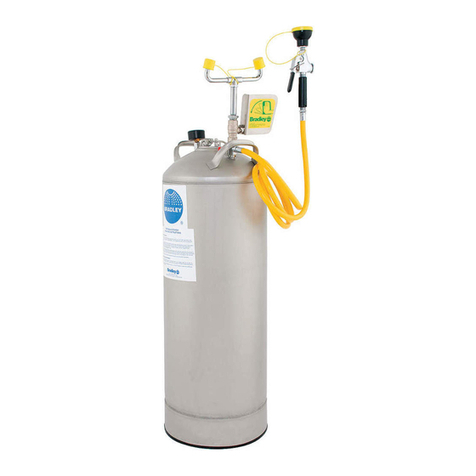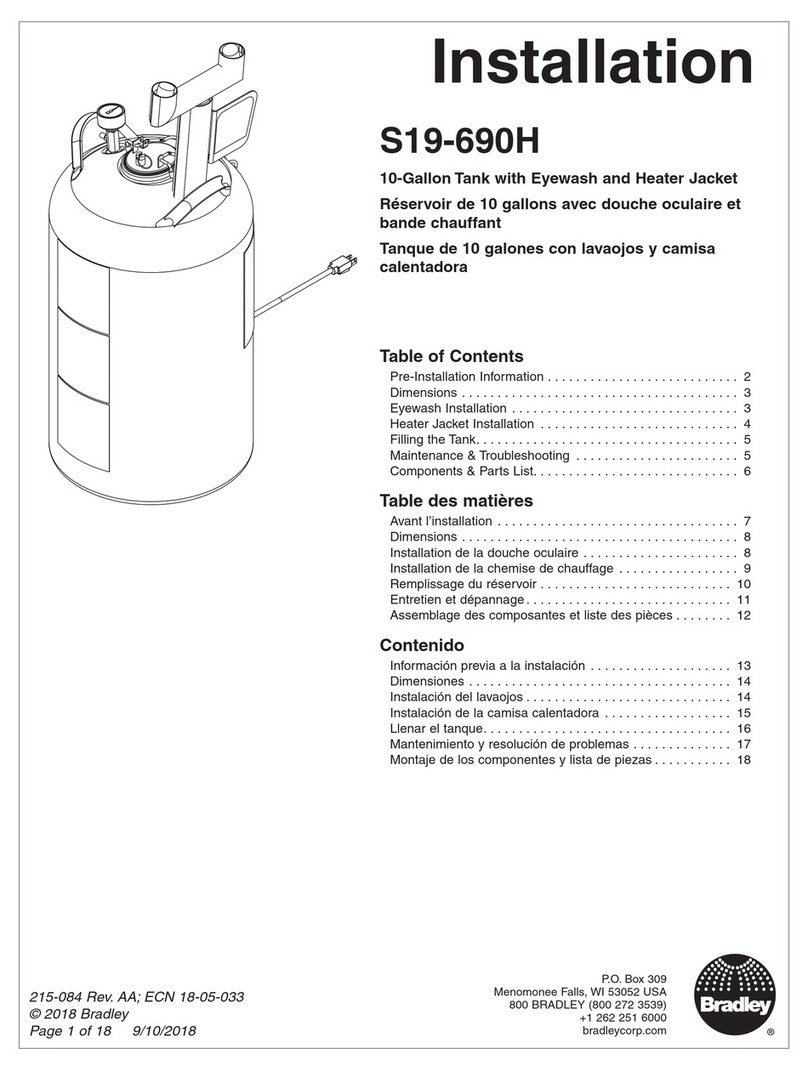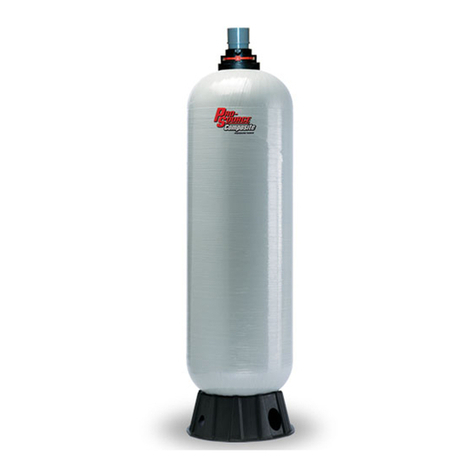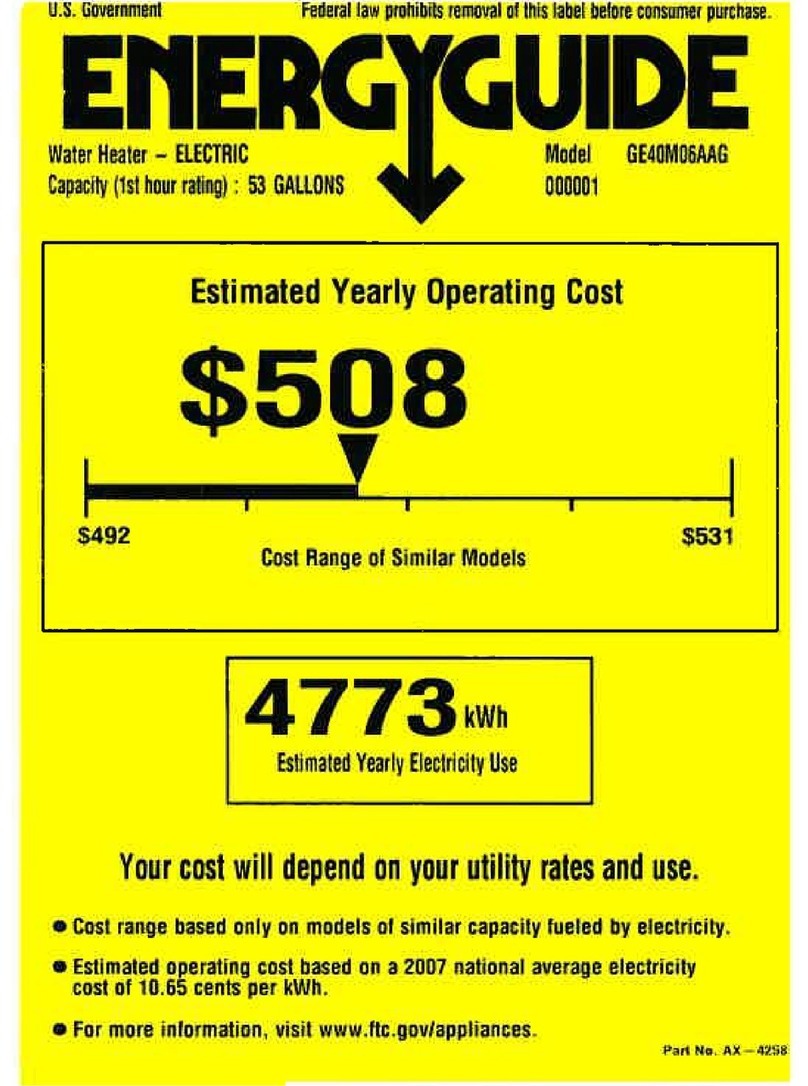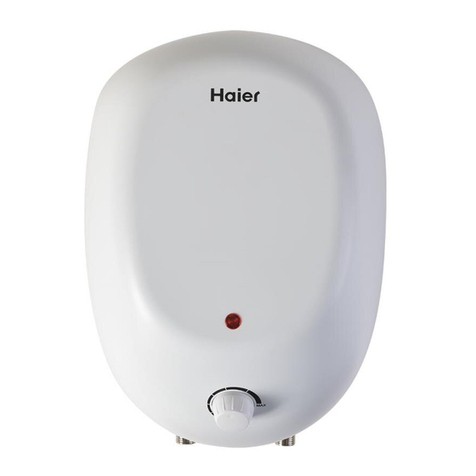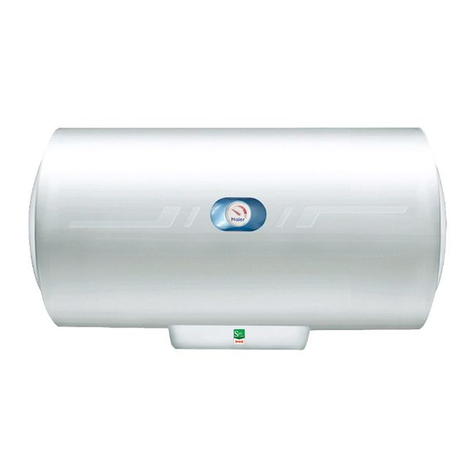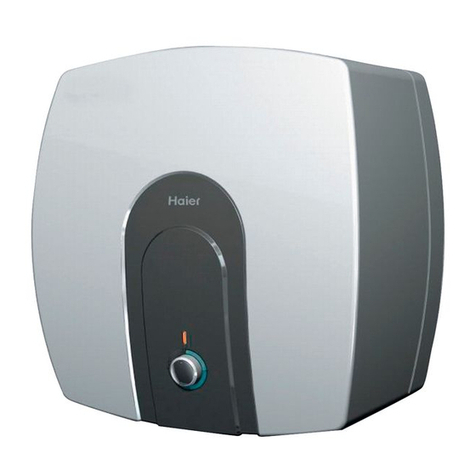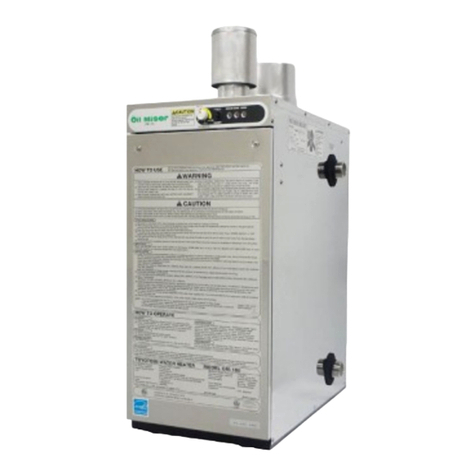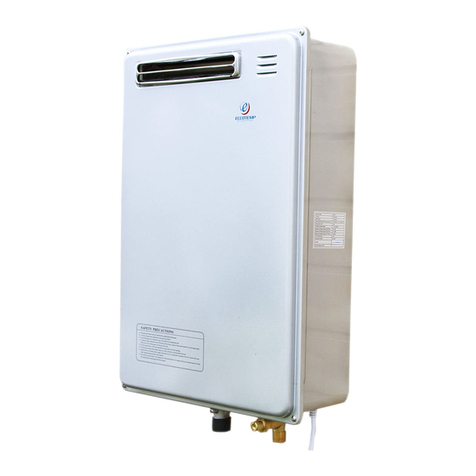
2
S193 Series Installation
12/5/2012 Bradley • 215-1712EW Rev. B; ECN 12-05-38
IMPORTANT
Read this installation manual completely to ensure proper installation, then file it with the
owner or maintenance department. Compliance and conformity to drain requirements and
other local codes and ordinances is the responsibility of the installer.
Separate parts from packaging and make sure all parts are accounted for before discarding
any packaging material. If any parts are missing, do not begin installation until you obtain the
missing parts.
Flush the water supply lines before beginning installation and after installation is complete.
Test the unit for leaks and adequate water flow. Main water supply to the emergency fixture
should be “ON” at all times. Provisions shall be made to prevent unauthorized shutoff. Please
refer to the enclosed instructions for flushing the unit prior to use.
The ANSI Z358.1 standard requires an uninterrupted supply of flushing fluid. Bradley plumbed
emergency fixtures require a minimum of 30 PSI (0.21 MPa) flowing pressure. Flushing fluid
should be tepid per ANSI Z358.1.
The inspection and testing results of this equipment should be recorded weekly to verify
proper operation. This equipment should be inspected annually to ensure compliance with
ANSI Z358.1.
For questions regarding the operation, installation or maintenance of this product, visit
bradleycorp.com or call 800.BRADLEY (800.272.3539).
Product warranties and parts information may also be found under ”Products” on our web site
at bradleycorp.com.
Installation and maintenance of this system must be completed by a qualified plumber
and electrician according to the information contained in this installation manual and in
compliance with all national and local codes. When making electrical connections be sure to
follow all lockout–tagout safety procedures.
It is recommended that all water supply and electrical connections be made at temperatures
above freezing (32° F (0° C). Failure to do so may result in major product and/or property
damage.
Installation
THIS
SIDE
UP
Packing List
•
•
•
•
P.O.Box309, Menomonee Falls, WI 53051
R
TESTTHISUNIT EACHWEEK
Test-operatevalve(s) each week and sign below.
Reportany malfunctions immediately.
Ventil(e)wöchentlich im Testbetrieb prüfen, bestätigt
durchUnterschrift. Jegliche Störung sofort melden.
Date
Datum
Date
Signed
Unterschrift
Signe
Date
Date
Date Signed
Signed
Signed
DIESESGERÄT1ST WÖCHENTLICH ZU PRÜFEN.
ESSAIHEBDOMADAIRE
Testle fonctionnement des valves chaque semaine et
signeen bas. S'il y à quelque chose qui ne va pas fait
unrapport immédiatement.
